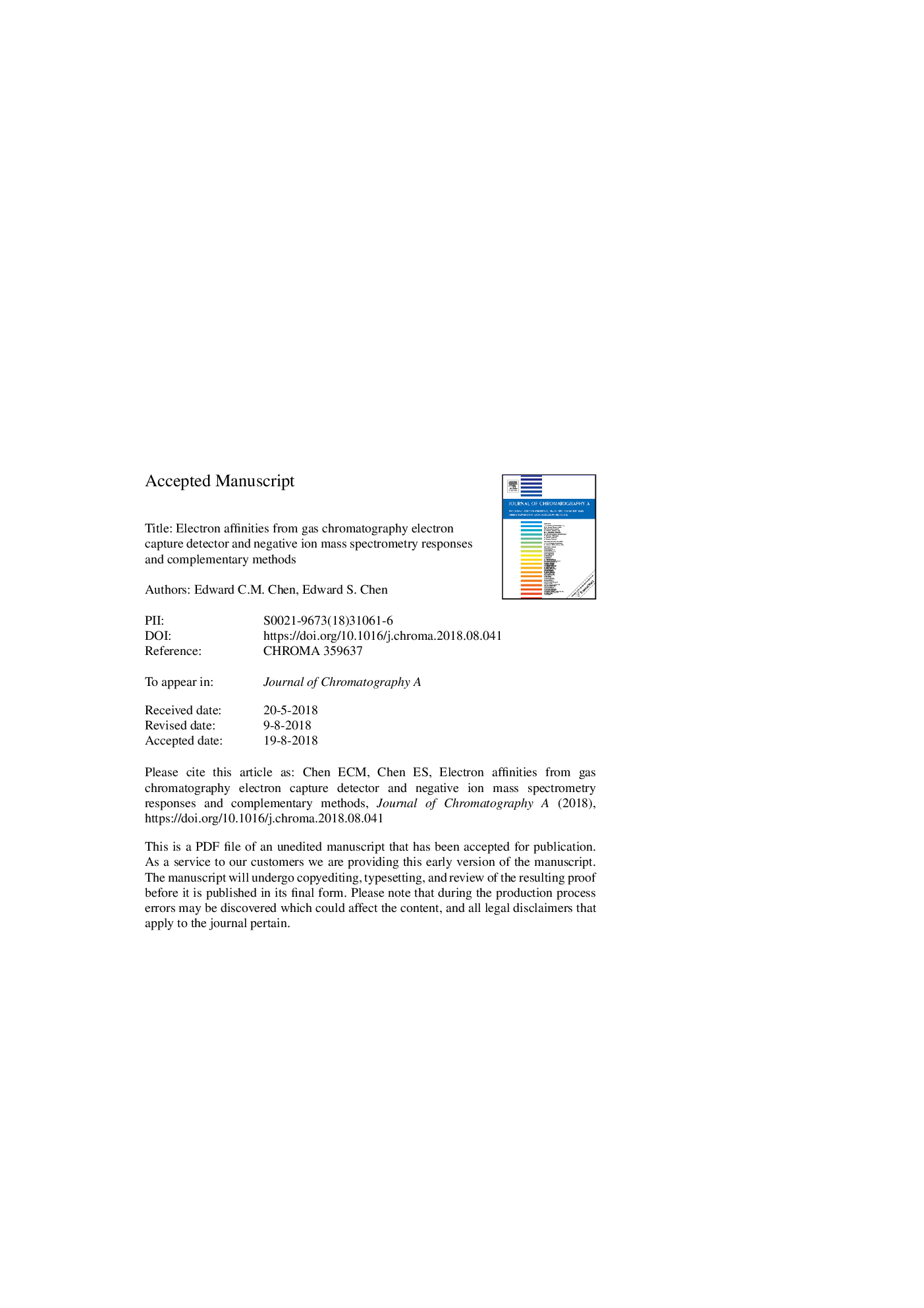| Article ID | Journal | Published Year | Pages | File Type |
|---|---|---|---|---|
| 11016068 | Journal of Chromatography A | 2018 | 56 Pages |
Abstract
The use of the electron-capture detector, ECD, to measure molecular electron affinities and kinetic parameters for reactions of thermal electrons with molecules at atmospheric pressure separated by chromatography and the sensitive and selective quantitative analysis of certain classes molecules are reviewed. The evaluated ground state electron affinities of the main group elements and diatomic molecules from slightly positive, 0+, to 3.6âeV are summarized. The electron affinities of twenty-seven superoxide states determined from pulsed discharge ECD and other methods are used to calculate one dimensional potential energy curves in agreement with theory. Advances in literature searches have uncovered ECD data in dissertations and theses and in the Russian and Japanese literature. These data, unpublished radioactive and pulsed discharge ECD thermal data from the University of Houston laboratories are used to report and evaluate electron affinities. The accuracy and precision of ECD electron affinities of organic molecules are identified and tabulated so that they can be added to compilations. A procedure for calculating the temperature dependence of electron molecule reactions is presented using kinetic and thermodynamic data. These are used toselect the most appropriate equipment and conditions for ECD analyses and physical determinations.
Related Topics
Physical Sciences and Engineering
Chemistry
Analytical Chemistry
Authors
Edward C.M. Chen, Edward S. Chen,
